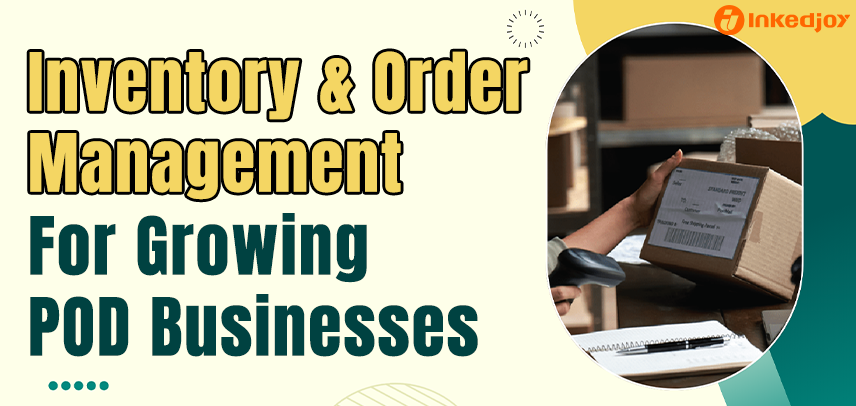
Inventory & Order Management for Growing POD Businesses
Your print-on-demand shop is finally taking off. The sales are rolling in, but suddenly the "automated" dream feels more like a daily scramble. What got you here won't get you to the next level. This guide is about taming that growth, turning operational headaches into a smooth, profitable system that keeps customers happy and your business moving forward.
The Tipping Point for a Growing Shop
The appeal of POD is its simplicity—at first. But when sales jump from a few a day to hundreds a week, that simple automation starts to crack.
You know you've hit this wall when your inbox is flooded with "Where is my order?" emails, fulfillment errors are on the rise, and you're juggling multiple storefronts just to keep up. Relying on the basic setup is no longer just inefficient; it's actively hurting the brand you've built.
Bringing Sanity to Your Order Flow
Getting out of that reactive loop starts with seeing everything in one place. Instead of bouncing between storefronts, pull all your orders into a single dashboard. This gives you a bird's-eye view of your entire operation. From there, you can build a simple but solid Standard Operating Procedure (SOP) to bring some order to the process.
A reliable daily routine might include these checkpoints:
| Daily Checkpoint | What to Do |
|---|---|
| Morning Order Scan | Quickly review new orders for obvious issues like bad addresses or odd requests. |
| Customization Check | Ensure any personalized design details are correct before sending to production. |
| Error Protocol | Have a go-to plan for handling a failed order sync or an out-of-stock item. |
Good communication with your production partner, like Inkedjoy, also makes a world of difference. When problems pop up, a clear and detailed message gets you a solution much faster than a vague complaint.

The Myth of "No Inventory"
The idea that POD is a "no-inventory" business is mostly true, but not entirely. Every growing brand ends up with some physical products, mainly samples for quality checks and marketing photos. Managing these samples is your first real taste of inventory management.
As you grow, you might even look at a hybrid model for your bestsellers. If one specific t-shirt makes up most of your sales, stocking the blanks yourself can be a smart move. This approach has some clear pros and cons:
| The Upside | The Downside |
|---|---|
| Get your most popular products out the door faster. | Requires cash upfront for the blank stock. |
| Lets you add custom touches like branded packaging. | You'll need a place to store everything. |
| Gives you final say on the quality of each item. | You risk getting stuck with unsold items if tastes change. |
It's a calculated move, but one that can give you a serious edge over the competition.
Using Tech to Your Advantage
Spreadsheets and basic e-commerce tools can only take you so far. As you scale, dedicated Order Management Software (OMS) becomes essential. It acts as the command center for your entire business, connecting your stores, your POD supplier, and your customer support. When you're looking for an OMS, focus on the tools that solve real POD problems:
| Key Software Feature | The Payoff |
|---|---|
| Multi-Channel Sync | Pulls every order from every store into one organized place. |
| Smart Order Routing | Automatically sends orders to the right printer based on location or product. |
| In-Depth Analytics | Shows you which products are actually making you money and where to improve. |
The real magic happens when your OMS can talk directly to your supplier's system through an API. Partners like Inkedjoy who offer this give you a transparent, real-time look into your production line.
Proactive Support for Happy Customers
At the end of the day, a great business is built on happy customers, not just fulfilled orders. This means shifting your mindset from putting out fires to preventing them from starting. Use your management software to flag potential issues—like an order that's been stuck in production too long—so you can get ahead of the problem.
Having a few ready-to-go email templates for common questions saves time and keeps your responses consistent and professional. The golden rule? Be transparent. If there's a delay, let people know. An informed customer is usually a patient one.
Building a Business That Lasts
Moving your POD business to the next level is all about shifting from passive automation to active management. By getting your orders organized, smartly managing a small inventory, and using the right tech, you build a business that can handle growth without breaking. This hands-on approach is how you turn the chaos of a growing business into a foundation for long-term success.



